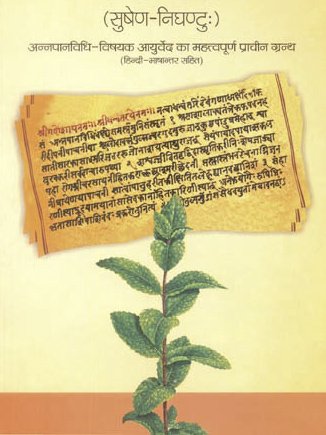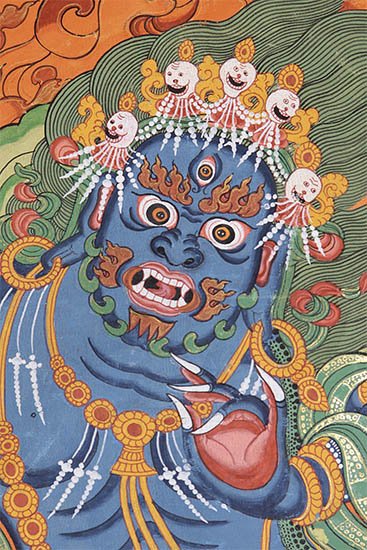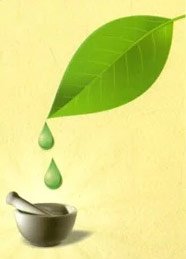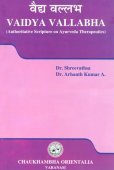Peya, Peyā: 22 definitions
Introduction:
Peya means something in Buddhism, Pali, Hinduism, Sanskrit, Marathi, Jainism, Prakrit, Hindi, biology. If you want to know the exact meaning, history, etymology or English translation of this term then check out the descriptions on this page. Add your comment or reference to a book if you want to contribute to this summary article.
In Hinduism
Ayurveda (science of life)
Rasashastra (Alchemy and Herbo-Mineral preparations)
Source: archive.org: Rasa-Jala-Nidhi: Or Ocean of indian chemistry and alchemyPeya is rice boiled with fourteen times its weight of water and turned semi-liquid.
Nighantu (Synonyms and Characteristics of Drugs and technical terms)
Source: Wisdom Library: Raj NighantuPeya (पेय) or Peyavarga is another name for Kṣīrādi: the fifteenth chapter of the 13th-century Raj Nighantu or Rājanighaṇṭu (an Ayurvedic encyclopedia). The Rāja-nighaṇṭu is a medical lexicon ascribed originally known as the Abhidhānacuṇāmaṇi. It mentions the names of 1483 medicinal drugs (auṣadhi) and substances (dravya) excluding synonyms, grouped into twenty-two chapters [viz., Peya-varga].
Dietetics and Culinary Art (such as household cooking)
Source: Shodhganga: Dietetics and culinary art in ancient and medieval India1) Peya (पेय) refers to “food to be drunk” and represents one of the six kinds of food (anna), according to the Vālmīki-Rāmāyaṇa Ayodhyākāṇḍa 94.20, and is commonly found in literature dealing with the topics of dietetics and culinary art, also known as Pākaśāstra or Pākakalā.—Vālmīkirāmāyaṇa gives us a five-fold classification of food items, which are [viz., peya].
2) Peya (पेय) or Peyā (पेया) refers to one of the various types of “gruels” (usually refers to a food preparation with cereal boiled in water or milk), as mentioned in the Kṛtānnavarga, which is a subsection of the Annapānavidhi of the Sūtrasthāna of the Suśrutasaṃhitā, an important Ayurvedic treatise. The discourses of the teacher Divodasa are believed to be summarised by his disciple Suśruta, who wrote the work Suśrutasaṃhitā in 4th century CE. [...] Kṛtānna-varga, the subsection of Annapānavidhi describes the preparations and properties of different types of gruels like peya, vilepi, maṇḍa, pāyasa, mudgayūṣa and kṛsara, meat dishes like ullupta, vesavāra, etc.
Peya refers to a type of Yavāgu or “rice gruel”, as described in the 17th century Bhojanakutūhala (dravyaguṇāguṇa-kathana).—According to Bhojanakutūhala, rice gruels are prepared by boiling rice in water. Different types of rice gruels are described here, the water content being different. For yavāgu generally the quantity of water taken is six times that of the measure of rice. If the quantity of water is four times, it is called vilepī. If it is fourteen times, then it is peyā. The text also describes another type of gruel viz. yūṣā which is slightly heavier than the last variety, i.e. peyā. [...]
Kalpa (Formulas, Drug prescriptions and other Medicinal preparations)
Source: Shodhganga: Edition translation and critical study of yogasarasamgrahaPeya (पेय, “gruel”) is the name of a Sanskrit technical term as defined in the 15th-century Yogasārasaṅgraha (Yogasara-saṅgraha) by Vāsudeva..—Peya (gruel) can be said as gruel with more water and less solid factor. Generally grains are cooked in decoctions or with raw drugs to prepare peya.
Unclassified Ayurveda definitions
Source: Wisdom Library: Āyurveda and botanyPeyā (पेया) is a Sanskrit technical term translating to “thin gruel”, and is used throughout Ayurvedic literature such as the Caraka-saṃhitā. Gruel is a type of soup usually having with some type of cereal as a base.
Source: gurumukhi.ru: Ayurveda glossary of termsPeya (पेय):—Thin gruel of rice along with its solid portion (Siktha). To prepare Peya, 14 parts of water and 1 part of broken rice are taken and boiled well till all the rice particles become soft. It increases digestive fire.

Āyurveda (आयुर्वेद, ayurveda) is a branch of Indian science dealing with medicine, herbalism, taxology, anatomy, surgery, alchemy and related topics. Traditional practice of Āyurveda in ancient India dates back to at least the first millenium BC. Literature is commonly written in Sanskrit using various poetic metres.
In Buddhism
Tibetan Buddhism (Vajrayana or tantric Buddhism)
Source: MDPI Books: The Ocean of HeroesPeya (पेय) refers to “beverages” (suitable for offering), according to the 10th-century Ḍākārṇava-tantra: one of the last Tibetan Tantric scriptures belonging to the Buddhist Saṃvara tradition consisting of 51 chapters.—Accordingly, [while explaining the fire-circle (agnicakra)]: “[...] He certainly performs worship here with the left and right hands. [There are] beasts: Every [practitioner] gathered together should offer the meat [of beast] of all [kinds]. He should offer various kinds of beverage (peya) and a variety of foods (the lickable). Having risen from your seat, perform worship! O vajra-holder! Again, having come, [he should perform] the circle worship for the twelve [circles]. The Fire Circle, the first, in the Enjoyment Layer is thus [taught]”.

Tibetan Buddhism includes schools such as Nyingma, Kadampa, Kagyu and Gelug. Their primary canon of literature is divided in two broad categories: The Kangyur, which consists of Buddha’s words, and the Tengyur, which includes commentaries from various sources. Esotericism and tantra techniques (vajrayāna) are collected indepently.
Biology (plants and animals)
Source: Google Books: CRC World Dictionary (Regional names)Peya in India is the name of a plant defined with Careya arborea in various botanical sources. This page contains potential references in Ayurveda, modern medicine, and other folk traditions or local practices It has the synonym Careya arborea Roxb. & Roxb. (among others).
Example references for further research on medicinal uses or toxicity (see latin names for full list):
· Flora Indica (1832)
· Bangladesh J. Pharmacol. (2008)
· Pl. Corom. (1811)
· Hortus Bengalensis (1814)
· Fitoterapia (2003)
· Fragmenta Phytographiae Australiae (Mueller) (1866)
If you are looking for specific details regarding Peya, for example extract dosage, pregnancy safety, side effects, health benefits, chemical composition, diet and recipes, have a look at these references.

This sections includes definitions from the five kingdoms of living things: Animals, Plants, Fungi, Protists and Monera. It will include both the official binomial nomenclature (scientific names usually in Latin) as well as regional spellings and variants.
Languages of India and abroad
Marathi-English dictionary
Source: DDSA: The Molesworth Marathi and English Dictionarypēya (पेय).—a S (Possible, proper, purposed &c.) to be drunk, drinkable.
--- OR ---
pēya (पेय).—f A disorder of the belly, attacking cattle.
Source: DDSA: The Aryabhusan school dictionary, Marathi-Englishpēya (पेय).—a Drinkable.
Marathi is an Indo-European language having over 70 million native speakers people in (predominantly) Maharashtra India. Marathi, like many other Indo-Aryan languages, evolved from early forms of Prakrit, which itself is a subset of Sanskrit, one of the most ancient languages of the world.
Sanskrit dictionary
Source: DDSA: The practical Sanskrit-English dictionaryPeya (पेय).—a. [pā-pāne karmaṇi yat]
1) Drinkable, fit to be quaffed or drunk; भोज्यं पेयं तथा चूष्यं लेह्यं खाद्यं च चर्वणम् । निष्पेयं चैव भक्ष्यं स्यादन्नमष्टविधं स्मृतम् (bhojyaṃ peyaṃ tathā cūṣyaṃ lehyaṃ khādyaṃ ca carvaṇam | niṣpeyaṃ caiva bhakṣyaṃ syādannamaṣṭavidhaṃ smṛtam) Rājanighaṇṭu.
2) Sapid.
-yam 1 Water.
2) Milk.
3) A drink, beverage.
-yā 1 Rice-gruel.
2) A drink mixed with a small quantity of boiled rice.
Source: Cologne Digital Sanskrit Dictionaries: Shabda-Sagara Sanskrit-English DictionaryPeya (पेय).—mfn.
(-yaḥ-yā-yaṃ) Drinkable, drink. n.
(-yaṃ) 1. Water. 2. Milk. f.
(-yā) 1. Rice gruel. 2. Decoction of any thing after straining. 3. Any drink with a small quantity of boiled rice. 4. A nise, (Pimpinella anisum.) E. pā to drink, aff. yat .
Source: Cologne Digital Sanskrit Dictionaries: Cappeller Sanskrit-English DictionaryPeya (पेय).—[adjective] to be drunk, drinkable; [neuter] drink, beverage.
Source: Cologne Digital Sanskrit Dictionaries: Monier-Williams Sanskrit-English Dictionary1) Peya (पेय):—[from pepīyamāna] mfn. to be drunk or quaffed, drinkable, [Mahābhārata; Kāvya literature] etc.
2) [v.s. ...] to be tasted, tastable, [Mahābhārata] (opp. to ghreya, spṛśya etc.)
3) [v.s. ...] to be taken (as medicine), [Caraka]
4) [v.s. ...] to be drunk in or enjoyed by (cf. śrotra-p)
5) [v.s. ...] m. (sc. yajña-kratu) a drink offering, libation, [Śāṅkhāyana-śrauta-sūtra]
6) Peyā (पेया):—[from peya > pepīyamāna] f. rice gruel or any drink mixed with a small quantity of boiled rice, [Mahābhārata; Caraka; Suśruta]
7) [v.s. ...] a species of anise (= miśreyā), [cf. Lexicographers, esp. such as amarasiṃha, halāyudha, hemacandra, etc.]
8) Peya (पेय):—[from pepīyamāna] n. a drink, beverage, [Mahābhārata; Rāmāyaṇa; Suśruta]
Source: Cologne Digital Sanskrit Dictionaries: Yates Sanskrit-English DictionaryPeya (पेय):—(yaṃ) 1. n. Water; milk. f. (yā) Rice gruel; anise. a. Drinkable.
Source: DDSA: Paia-sadda-mahannavo; a comprehensive Prakrit Hindi dictionary (S)Peyā (पेया) in the Sanskrit language is related to the Prakrit words: Pijjā, Peā, Peyā.
[Sanskrit to German]
Sanskrit, also spelled संस्कृतम् (saṃskṛtam), is an ancient language of India commonly seen as the grandmother of the Indo-European language family (even English!). Closely allied with Prakrit and Pali, Sanskrit is more exhaustive in both grammar and terms and has the most extensive collection of literature in the world, greatly surpassing its sister-languages Greek and Latin.
Hindi dictionary
Source: DDSA: A practical Hindi-English dictionaryPeya (पेय) [Also spelled pey]:—(nm) a beverage; (a) drinkable; potable; hence ~[tā] (nf); —[padārtha] a beverage,
...
Prakrit-English dictionary
Source: DDSA: Paia-sadda-mahannavo; a comprehensive Prakrit Hindi dictionaryPeyā (पेया) in the Prakrit language is related to the Sanskrit word: Peyā.
Prakrit is an ancient language closely associated with both Pali and Sanskrit. Jain literature is often composed in this language or sub-dialects, such as the Agamas and their commentaries which are written in Ardhamagadhi and Maharashtri Prakrit. The earliest extant texts can be dated to as early as the 4th century BCE although core portions might be older.
Kannada-English dictionary
Source: Alar: Kannada-English corpusPēya (ಪೇಯ):—
1) [noun] that which is fit to be drunk.
2) [noun] any liquid for drinking; a beverage; a drink.
3) [noun] water.
4) [noun] milk.
Kannada is a Dravidian language (as opposed to the Indo-European language family) mainly spoken in the southwestern region of India.
Nepali dictionary
Source: unoes: Nepali-English DictionaryPeya (पेय):—n. drinks; adj. drinkable;
Nepali is the primary language of the Nepalese people counting almost 20 million native speakers. The country of Nepal is situated in the Himalaya mountain range to the north of India.
See also (Relevant definitions)
Starts with (+46): Pey-amanakku, Peya-verutti, Peyakatti, Peyakkatukkay, Peyal, Peyala, Peyalam, Peyalvar, Peyam, Peyamanru, Peyameratti, Peyammaiyar, Peyammanpaccarici, Peyampalam, Peyan, Peyanar, Peyanvalai, Peyar, Peyar cintil, Peyar-encukilavi.
Ends with (+34): Abhippeya, Agrapeya, Ahippeya, Akashapeya, Anapeya, Annapeya, Antahpeya, Anupeya, Apeya, Ashvapeya, Aupeya, Campeya, Champeya, Dashapeya, Dugdhapeya, Gaupeya, Jhampeya, Kakapeya, Kapeya, Kashyapeya.
Full-text (+186): Peja, Annapeya, Pijja, Pea, Vajapeya, Agrapeya, Kakapeya, Peyamanru, Lajapeya, Antahpeya, Peyya, Purvapeya, Madhupeya, Shrotrapeya, Apeya, Dashapeya, Vilepi, Vajapeyahautra, Vajapeyahotrisaptaka, Vajapeyaklipti.
Relevant text
Search found 25 books and stories containing Peya, Peyā, Pēya, Pēyā; (plurals include: Peyas, Peyās, Pēyas, Pēyās). You can also click to the full overview containing English textual excerpts. Below are direct links for the most relevant articles:
Khadira-grihya-sutra (by Hermann Oldenberg)
Atharvaveda and Charaka Samhita (by Laxmi Maji)
Raktapitta according to Caraka < [Chapter 4 - Diseases and Remedial measures (described in Caraka-saṃhitā)]
Grahaṇī (sprue-syndrome) according to Caraka < [Chapter 4 - Diseases and Remedial measures (described in Caraka-saṃhitā)]
3b. Udararoga (Udara disease) in the Caraka-saṃhitā < [Chapter 5 - Diseases and Remedies in Atharvaveda and Caraka-Saṃhitā]
Rig Veda (translation and commentary) (by H. H. Wilson)
Sahitya-kaumudi by Baladeva Vidyabhushana (by Gaurapada Dāsa)
Text 10.86 < [Chapter 10 - Ornaments of Meaning]
Text 7.75 < [Chapter 7 - Literary Faults]
Text 10.190 < [Chapter 10 - Ornaments of Meaning]
The Agnistoma Somayaga in the Shukla Yajurveda (by Madan Haloi)
Somasaṃsthā (5): Vājapeya < [Chapter 3 - The Somayāga]
Vakyapadiya of Bhartrihari (by K. A. Subramania Iyer)
Verse 3.1.52 < [Book 3 - Pada-kāṇḍa (1): Jāti-samuddeśa (On the Universal)]
Related products
